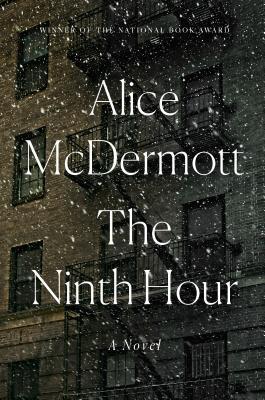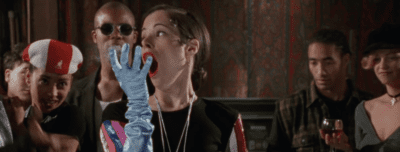Interview with 2018 NBCC Fiction Award Finalist Alice McDermott
For the past four years, the National Book Critics Circle has partnered with The New School’s MFA Creative Writing program, allowing the students to interview each of the NBCC Awards Finalists. In addition to building excitement for the Awards Finalist Reading and Ceremony held at the New School March 14th-15th, these interviews have built an intergenerational bridge between the writers of today and tomorrow.
This year, as part of the ongoing collaboration, and in support of the NBCC’s conversation about reading, criticism, and literature that extends from the local to the national, Brooklyn Magazine will publish and promote the interviews between NBCC Finalists and the current students of The New School.

The Ninth Hour by Alice McDermott follows the lives of several Catholic women living in early-twentieth-century Brooklyn. When Annie’s husband commits suicide, she is left with few choices, especially since she is pregnant with their child. Due to the kindness of Sister St. Saviour, a nun whose vocation is to help the poor and sick, Annie begins to work at the convent, where her daughter Sally is born. The lives of Annie, Sally, Sister St. Saviour, Sister Illuminata, and others reveal pain and suffering, penance and salvation, and, most importantly, the often-ignored sacrifice that these women and their contemporaries made.
There were so many incredible historical details in this book: the description of the chamber pot; the laundry; the information about the various orders of nuns. Can you describe your research process while writing this book?
Research is a siren song for novelists—or at least for this one. It’s so easy to be lured into hours and days of research, uncovering all kinds of fun facts, while not a single sentence meant for readers gets written. To avoid this, I try to write as much of the story as I can before I start to research. I find that if I labor to get my characters to the page with some vividness, I’m surprised by how much I seem to know about their lives.
So much of this novel focuses on figures of family myth. How does the idea of a family myth travel from generation to generation, and in what ways does it shape a family’s narrative? Were you thinking about these familial stories as you wrote the book?
Very much so. The collective voice of the narrators here speak exactly to this family myth-making, which I think is akin to faith-making. Faith, much like family lore, comes to us in a variety of ways—stories, anecdotes, speculations, memories, research—and both, faith and family lore, require the willingness to believe in things unseen. I know with certainty, for instance, that I had a great-great-grandmother, but I’ve never seen her, or met anyone who has. That the narrators of The Ninth Hour see a past they didn’t actually live through with such certainty and vividness is a reflection of the capacity of those with religious faith to find the unseen more certain than the world before their eyes.
One of the most memorable quotes in the book [to me] is, “There is a hunger,” when one of the Sisters is explaining Annie’s actions to Sally. Is there a relationship between faith and this intrinsically human hunger, and is there a way to balance the two?
Sister Illuminata, whose quote this is, also adds, “A hunger to be comforted.” I agree that this hunger is intrinsically human. I think it’s intrinsic to faith as well. Faith arises out of this hunger: the hunger to love, the hunger for justice, and the hunger to redeem suffering, to be reconciled to our mortality.
The women in this book must band together as a community to survive. From the young widows left penniless and with no prospects, to the Sisters whose accomplishments are hijacked by priests, women must turn to each other, not only for emotional and physical support but, for survival. Can you speak a bit more about this dynamic?
At a time when there was no social safety net, when ordinary women’s lives were even less valued than they are today, women were often left to their own devices. The incredible accomplishments of religious women in this country—the schools, universities, hospitals they established, many of them focused on the needs of women—goes grossly unacknowledged even today. The Mayo Clinic was started by nuns, for instance. Instead, we still have jokes about nuns in classrooms, hitting kids with rulers. I see this as a particularly insidious form of misogyny.
Sister Lucy tells Sally, “If we could live without suffering, we’d find no peace in heaven.” Suffering is central to the Catholic faith, and central to this book as well. What is the relation between suffering and faith, and how do the two affect your characters’ lives?
Suffering is central to the Catholic faith, but suffering is also an inevitable experience for all of us who are human. People of faith, it seems to me, are at least willing to acknowledge the injustice of the way suffering is visited upon us all, especially the innocent. Sister Jeanne’s homely theodicy about justice and suffering speaks to this. Her confidence in eternal life as a recompense for suffering may be an antique notion, but at least she’s thinking.
Catholics who commit suicide were ineligible to be buried in a Catholic cemetery. When Jim commits suicide, Sister St. Saviour does her best to deceive the Church and have the doomed man buried in hallowed ground. Why does the Sister work so hard to get Jim buried in a Catholic plot?
Sister St. Saviour understands the injustice of the Church’s rule regarding the burial of suicides in hallowed ground. Because she understands human nature, she knows that his death is not due to lack of love, or faith but, in her own assessment, depression—the suicide’s inability to go on through just one more day. I don’t see her determination to have him buried in a Catholic cemetery as driven so much by pity, as it is driven by her conviction that the Church is wrong—and that this rule lacks Christian compassion.
From the Sister who says pernt instead of point, to the randy woman on the train, who wriggles her pinky finger and asks Sally, “Can you imagine a girl the size of me spending her life riding a thing the size of that?” How did you approach dialogue in this book? How did you strike a balance between historical accuracy and modern readers’ ease of understanding?
I love Elizabeth Bowen’s advice that characters should only speak when they have to—it’s a reminder to listen for the character’s voice, not to manipulate it.
I think the real challenge in writing about the past is not so much vocabulary, context can be a simple fix for that, but the danger of applying a kind of “presentism” to another era. Keeping a larger context in mind is helpful here as well. One must be aware of the breadth of a character’s experience in a certain time and place in order to understand her mindset, her choices, her view of the world.
Some of the most striking passages were focused on gross details of illness or dirtiness. In a book where faith and godliness is central to the story, what is the role of the human body in all its gross detail?
I think all realistic fiction is grounded in physical details. I don’t know how I could write an honest novel featuring nursing nuns who care for the sick poor without precise details of their daily work. I guess I don’t see these as gory details; only the facts of illness and accident and poverty, of human suffering. I see these physical realities as reason to be astonished by the compassion and the strength of these women—their faith and godliness, if you will. Again, I fear our culture’s marginalization of such women—as classroom witches or bodiless singing nuns—allows us to smugly dismiss what difficult work they’ve done, and continue to do.
You might also like 


























